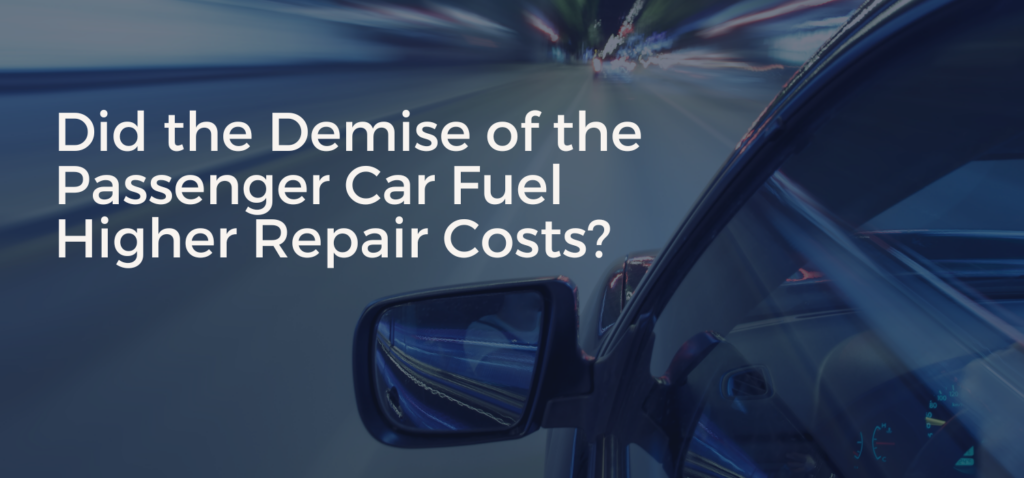Did the Demise of the Passenger Car Fuel Higher Repair Costs?

When I started in the collision repair industry, SUVs were a relative rarity. If I wrote a repair appraisal for an SUV, it was likely an 80s Jeep Grand Wagoneer or Ford Bronco. But most of the vehicles I inspected were passenger cars or minivans. Soon came the flood of popular SUVs based on pickups: the Explorers, S-10 Blazers, 4Runners and Xterra’s.
The shift in the early 2000s towards SUVs and away from passenger cars fueled a rise in repair costs driven by the rise of the traditional body on frame SUVs. The rise was both on the collision and third-party APD side. These heavier than average SUVs had higher bumper heights that overrode passenger car bumpers and impacted more vulnerable sheet metal and plastics. Similarly, those old body-on-frame SUVs had no energy absorbing bumper systems, so face bars and brackets all had to be replaced in the event of damage.
As government fuel efficiency standards increased, the popular body-on-frame SUVs were replaced with new unibody ‘crossover’ SUVs. But these vehicles, like the body-on-frame SUVs, were still exempt from passenger-car bumper standards and the damage to these bumper areas remained more expensive to repair than for passenger cars.
Fast forward to a glimpse of the existing car park of 280 million privately owned registered vehicles in the US, and most of those are unibody crossover SUVs. The average age of that vehicle is 12.6 years from new, a record high for vehicle age which also gives us important clues on current and future collision repair costs.
The car park is majority unibody crossover bumper systems where the plastic bumper-covers form most of the area at the front and rear ends of the vehicle. Behind those covers are supports and brackets that, when damaged, will require replacement. But at 12.6 years old, we still have not scratched the surface of ADAS equipment mounted in vulnerable areas in the front and rear of these vehicles, and ADAS components will drive the next wave of collision repair inflation for these vehicles.
Replacement parts are still the largest cost component of the repair estimate, and that portion grows with SUVs because of the number of parts that are damaged and require replacement. Finding the optimal part price for each part remains the best way to repair and not total out vehicles in today’s collision repair environment.
